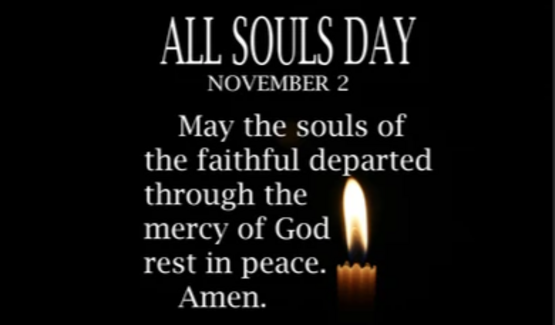All Souls Day - Sunday, November 2
-
 Sunday, November 2, 2025
Sunday, November 2, 2025The History of All Souls Day
The Church sets aside November 2 as the Commemoration of All the Faithful Departed—more commonly known as All Souls Day. Where All Saints Day honors those already in heaven, All Souls Day turns our prayer toward those who have died and are still on the journey of purification before entering the fullness of God’s presence.Early Christian Practice
From the beginning, Christians have prayed for the dead. The Acts of the Apostles and early Church writings testify to the belief that our prayers, Masses, and acts of charity can assist those who have died. The Eucharist especially was offered for the repose of their souls.
By the 6th century, monasteries set aside special days to pray for departed members of their communities. By the 10th century, the custom had spread widely in Europe. Around the year 998, Abbot Odilo of Cluny established November 2 as a day of prayer for all the faithful departed in the monasteries of the Cluniac order. This practice soon spread throughout the entire Church.The Day After All Saints
Placing All Souls Day immediately after All Saints highlights the connection between the Church in heaven and the Church on earth. November 1 celebrates those who already share God’s glory; November 2 reminds us to pray for those who are still being made ready for it. Together, these two days express the beautiful truth of the Communion of Saints: the living and the dead are united in Christ, helping one another through prayer.The Meaning of the Day
On All Souls Day, the Church invites us to remember our loved ones who have died, to commend them to God’s mercy, and to renew our own hope in the Resurrection. This remembrance is not only sorrowful—it is also filled with faith and love. Our prayers are acts of trust, entrusting our beloved dead into God’s hands and affirming that “life is changed, not ended.”